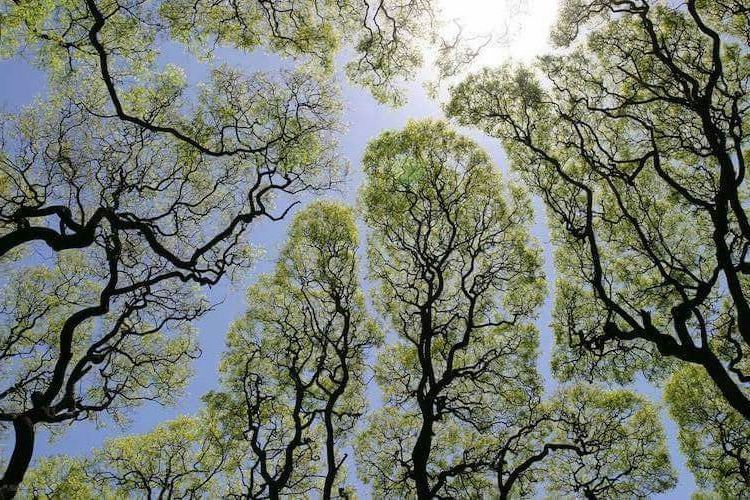When we look at a plant in nature, it’s worthwhile to remember that we’re simply just seeing a part of it. We see that plant at that moment in time. Perhaps we notice the leaves, the flower buds, or the patterns on the bark of a tree.
Instead, try to zoom out your perspective, and envision how that plant grew to be where it is today — the routes it took to find nutrients, water, and forage for what it needs. Where it started from as a seed, and where that seed came from. The roots that grew into the soil, or perhaps the direction it grew to find more sunlight.
As you think of the intricate, intentional paths that plants take to fill their needs, consider how this is reflected in your own life — what are you looking for? And how can you best create a path towards it? We’ve drawn inspiration from a few concepts in the natural world to help give you a different perspective of how you can move through your life, and the world around you with intention.

Image Source: Pinterest
Let instincts lead
Where do you wish to go, compared to where you’re supposed to go? Consider the concept of desire paths — a small trail created by people or animals that are shortcuts or simpler routes, compared to an intentionally-built path. These routes, also called “cow paths” and “goat tracks,” are driven by ease and instinct.
Prompt: Where can you allow yourself to meander, following your own values and intuition? Where is there an expected path that perhaps doesn’t quite fit?
 Image Source: Pinterest
Image Source: Pinterest
Remember the big (and little) picture
Consider the shape of a tree, the shape of its branch, and the patterns of the little branches that extend in every which way, with intention. This is an example of a fractal — an intricate pattern in nature that repeats in different scales. We can find fractals on a tiny snowflake, and we can also find in the curves of rivers.
Prompt: Consider the parallels between the micro and the macro in your life, the little and the big. Notice the links within your own life, and the one’s between yourself and the world that’s around you.

John Ernest Weaver (1919) “Patterns From The World Underneath: The Ecological Relations Of Roots. Image Source: Pinterest
Build strong roots
Plants root into the earth. This is the hidden, yet necessary work, that allows for a slow and considered life. What happens under the surface is what creates success, and sometimes what you can’t see has the biggest impact.
Prompt: Where are you at work behind the scenes? Perhaps it’s a career project you’re focused on, perhaps you simply did a kind task for a friend, without asking for thanks. Remember to feel the fullness of your successes.
 Crown shyness. Dag Peak, CC BY 2.0, via Wikimedia Commons
Crown shyness. Dag Peak, CC BY 2.0, via Wikimedia Commons
Consider your community
A plant can’t exist on its own, and neither can we. In some forests, you might look up and notice defined spaces between treetops — this is called crown shyness. Scientists aren’t entirely certain why trees grow this way, but it could help light reach plants further down on the forest floor, in a way that benefits the trees and plants.
Prompt: Each of us is an individual, but each of us is also completely interconnected. Perhaps there is somewhere in your life you could ask for help where you need it. Perhaps there’s somewhere you have space to offer someone else help.



